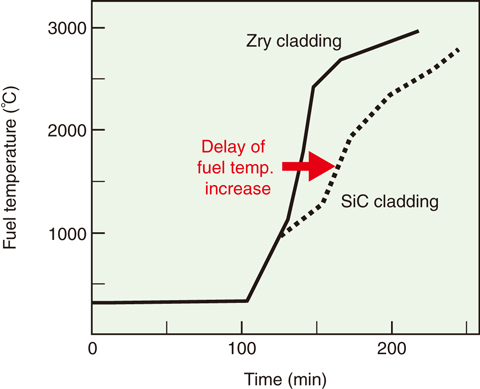
Fig.4-21 Schematic illustration indicating the relationship between fuel temperature and oxidation time in both SiC and Zry claddings
Zirconium alloys, which are used as fuel cladding and other core components in light-water reactors, are readily oxidized at higher temperatures. The reaction of zirconium (Zr) with water or steam is accompanied by the release of hydrogen gas as well as the formation of an oxide. In addition, the reaction is highly exothermic and the reaction rate becomes very high beyond 1500 °C. The cooling capability at the TEPCO’s Fukushima Daiichi NPS (1F) was lost owing to the tsunami caused by the Great East Japan Earthquake. It is believed that the Zr-alloy fuel cladding was oxidized in the heated core and that the subsequent temperature escalation due to oxidation caused core melting. It is also presumed that hydrogen generated by the oxidation leaked from the primary containment vessel, causing the reactor building to explode. Based on lessons learned from the 1F accident, we are developing advanced fuel and core components with enhanced accident tolerance to prevent extensive core damage and hydrogen generation and mitigate these phenomena in accidents beyond the design basis.
High-temperature oxidation is an indication of accident tolerance. Fig.4-21 schematically compares fuel-temperature increases during accidents in reactor cores with silicon-carbide and Zr-alloy fuel cladding. The figure shows that the remarkably lower oxidation rate of silicon carbide (SiC) can suppress fuel-temperature escalation and consequently the core damage experienced in 1F may be prevented or mitigated. Therefore, it is commonly recognized that development of the cladding with high oxidation resistance is the most effective way to enhance accident tolerance.
We have chosen SiC/SiC composites reinforced by SiC-fibers and FeCrAl-steel strengthened by the dispersion of fine-oxide particles (FeCrAl-ODS steel) as promising candidates for advanced fuel components with enhanced accident tolerance. We have started R&D to establish a technical basis for implementing advanced fuel components in existing LWRs. The R&D is conducted in cooperation with power-plant providers, fuel vendors, research institutes, and universities that have been involved in the development of advanced fuel components to utilize their accumulated experience, intelligence, and analytical tools for fuel design, fabrication, practical use, safety evaluation, and materials development.
We have clarified technical subjects including crucial showstoppers, factors that stops or could stop the progress, for the implementation by investigating the development status of advanced core-component materials and reviewing the current technical-readiness level (TRL) assuming implementation in existing LWRs. The R&D will be conducted to address technical challenges that have been clarified for candidate advanced-fuel components.
A part of this study is the result of the Development of a Technical Basis for Introducing Advanced Fuels Contributing to Safety Improvement of Current Light Water Reactors, as carried out under the Project for the Development of a Technical Basis for Safety Improvement at Nuclear Power Plants by the Agency for Natural Resources and Energy, the Ministry of Economy, Trade and Industry of Japan (METI).